Understanding Loans
Before you can determine which loan is right for you, you need to have an understanding of how each type of loan works and the costs and benefits of each. Let’s start with the two basic types of loans that most buyers have to choose from.

Fixed Rate Mortage
Fixed rate mortgages are exactly that – the interest rate remains fixed for the life of the loan. Monthly payments are fixed (for the principal and interest). Note that if your property taxes and homeowners insurance are included in your mortgage payment, these are paid through an “escrow” account which can fluctuate from year to year.

Adjustable Rate Mortgage
These are also called ARMs. This type of loan has the potential to have monthly payments that change since the interest rate can change. There is usually an initial period of time where the interest rate does not adjust.
It is important to know your future plans when determining the type of loan that is ideal for you. For example, if you are planning on staying in your home for only seven years, it might save you money to use an adjustable rate mortgage with the expectation that you will be moving and taking out a new loan before the interest rate is adjusted. However, what happens if there is a health issue or something else which prohibits you from moving in seven years? What if you cannot convert to a fixed-rate mortgage? These things must be taken into consideration when determining whether you can afford your monthly payment—now and later.
In addition to the fixed rate mortgage and adjustable rate mortgages, mortgages may also be either conventional (meaning funded by the private sector—usually a bank) or a government-backed loan. Government-backed loans are backed by an agency of the federal government, such as the Department of Veteran Affairs or the Department of Housing and Urban Development. The government agency is “insuring” the loan although the funding may still be by a bank.
So why the two different types of loans? Government-backed loans typically have less-stringent lending qualifications, making it easier for some buyers to get a loan. For example, at the time of this writing, the down payment on an FHA loan (by the Federal Housing Administration) can be as low as 3.5% as opposed to a private loan which typically requires 10 to 20%.
Below are the most-typical types of government loans:
As you can see, there are pros and cons to both conventional and government-backed loans. If you are thinking about buying a home in the near future, let us set up a meeting with a lender who can guide you through the ins and outs of each, and help you determine the best loan for your needs and comfort level.
FHA (Federal Housing Administration) Loan:
The three benefits of this loan are the low down payment, lower credit score requirements, and the option to include additional monies to fix the home up in the loan. Buyers who want to take advantage of an FHA loan first need to find an FHA-approved lender. We have a full list of our local FHA-approved lenders in the event these loan parameters sound like a good match for your needs.
Once the buyer finds a home and makes an offer, the FHA requires an inspection of the property. There is a minimum list of requirements the property must meet in order for the FHA to back the loan.
The drawback to an FHA loan? Government mortgage insurance is an additional expense you will need to cover.
VA Loan:
These are managed by the Department of Veteran Affairs and are reserved for military service members. The benefit of a VA loan is it does not require a down payment. If you are a military service member, an agent can help you find a property, and when it comes time to apply for the loan, your Veterans Administration office will provide free assistance with the application process.
